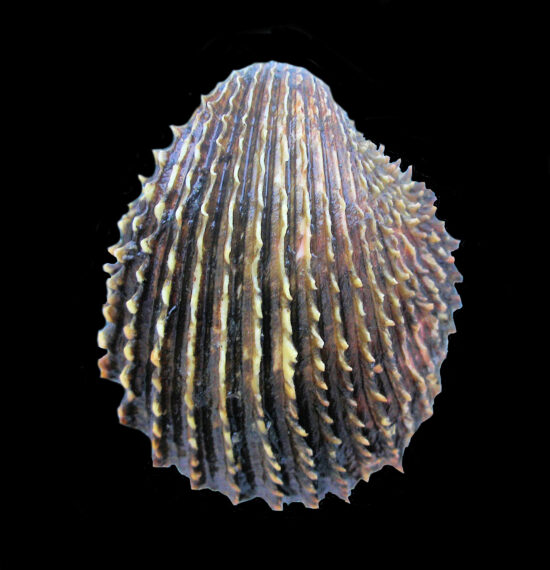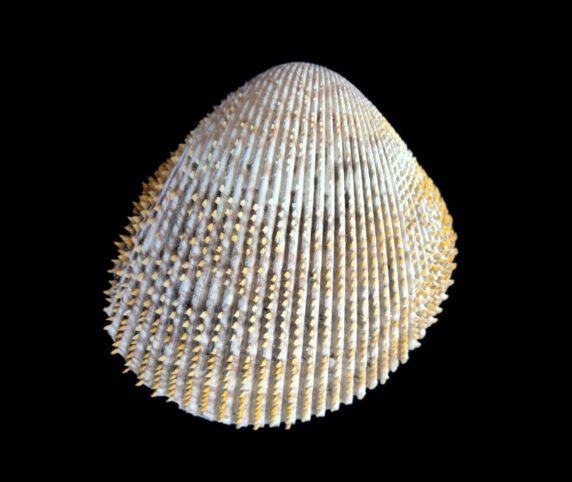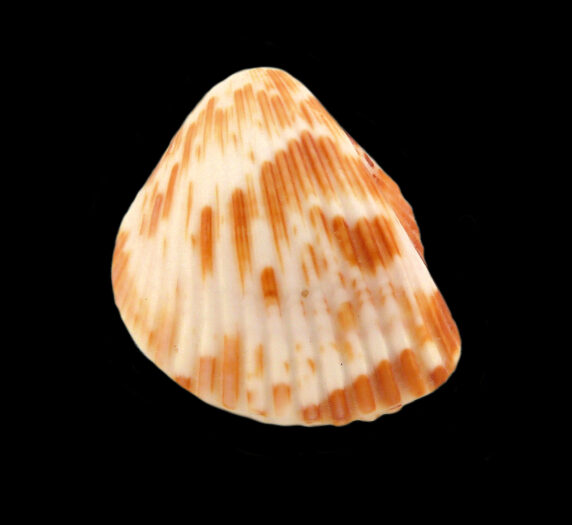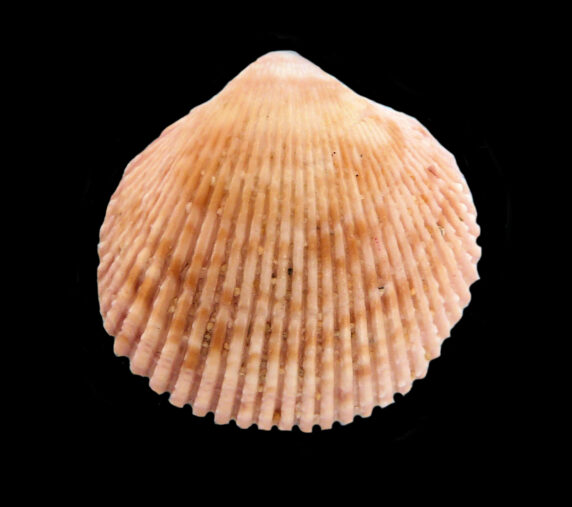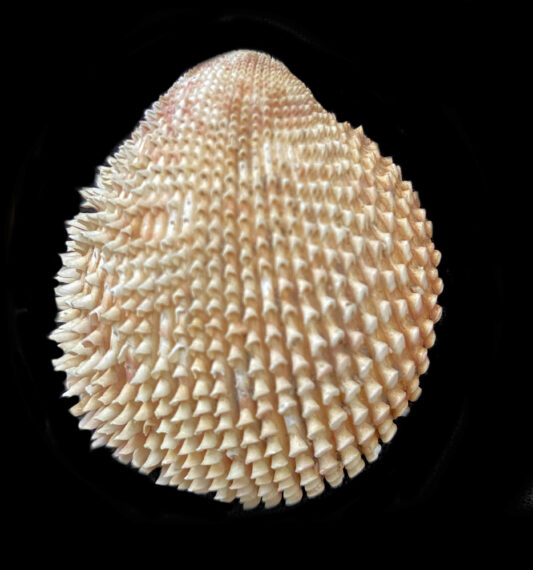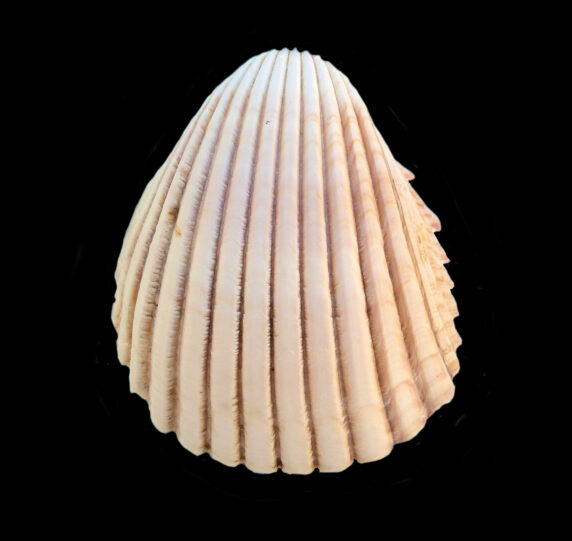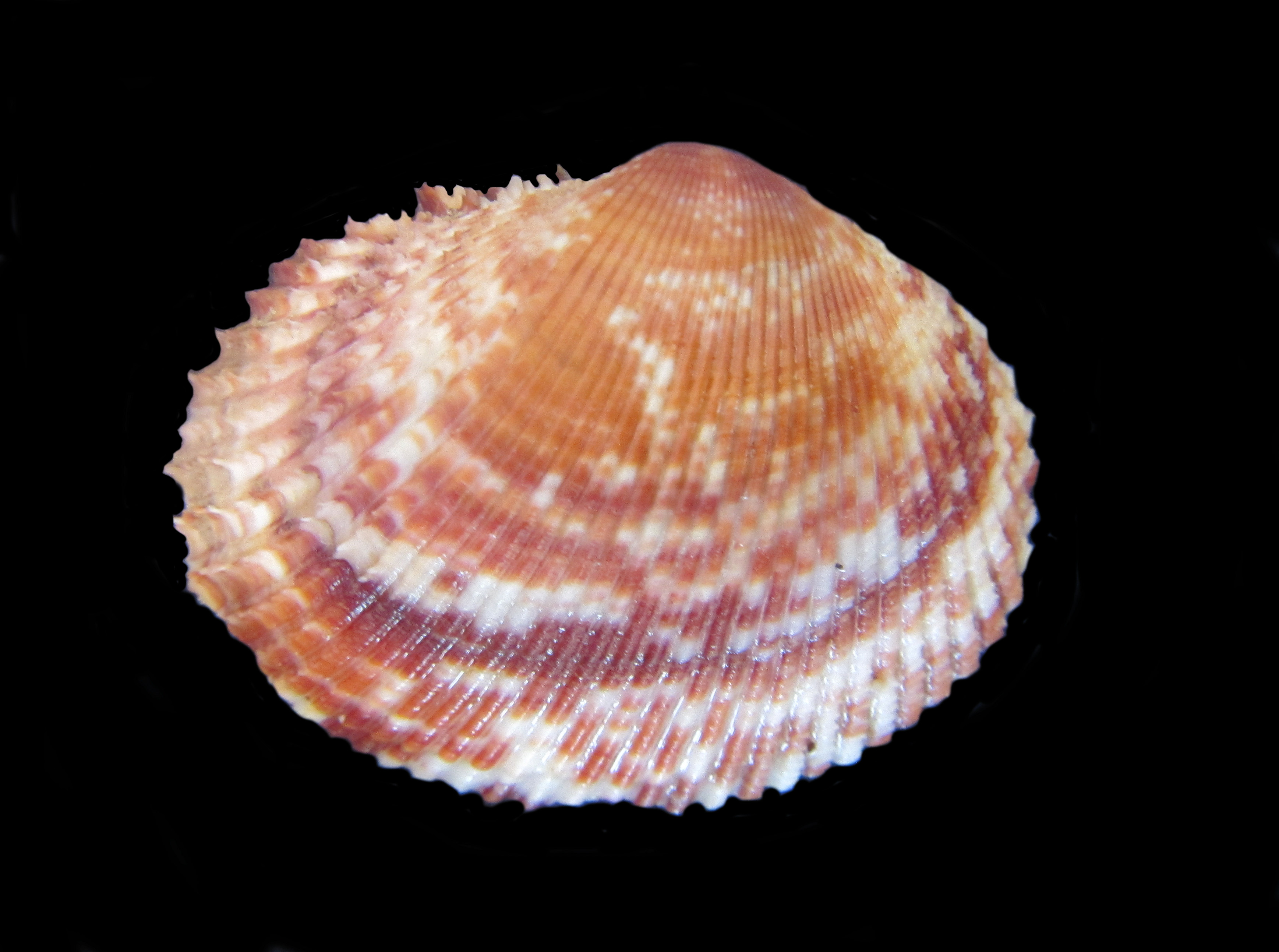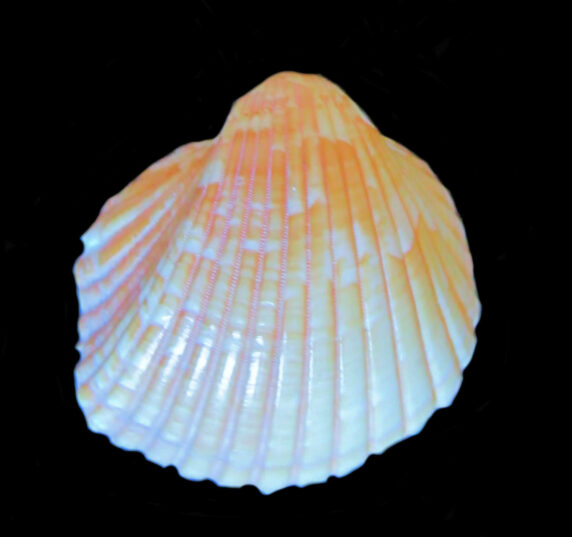Cockles and True Cockles of the Cardiidae Family are also known as Heart Shells, have heart-shaped profiles. Most Cockles and True Cockles are edible. The most famous members of the family are the Giant Clams (Genus Tridacna) from the Indo-Pacific that can reach 1.5 meters (4 feet 11 inches) in length.
Cardiidae shells are inflated and equivalve (both valves equal in size and shape) and they can be circular, triangular or quadrangular in shape. The shells can be thick, thin, or even translucent with serrated or scalloped margins and the outside surface of the shell can be smooth to strongly, radially, ribbed. Living cockles have short siphons. The siphons of some species contain light receptors. The Cockle’s foot is well developed, allowing it to move quickly across sand or mudflats.
Cockles and True Cockles are suspension feeders, filtering plankton and fine detritus from the surrounding water. Their predators include: birds, crabs, carnivorous mollusks and rays.
The Cockles and True Cockles have a global distribution and are found in shallow water, in tropical and temperate seas, and in some fresh water habitats. There are two hundred seventy-two species in the Cardiidae Family of which nine are found along the coastlines of the Baja Peninsula.
